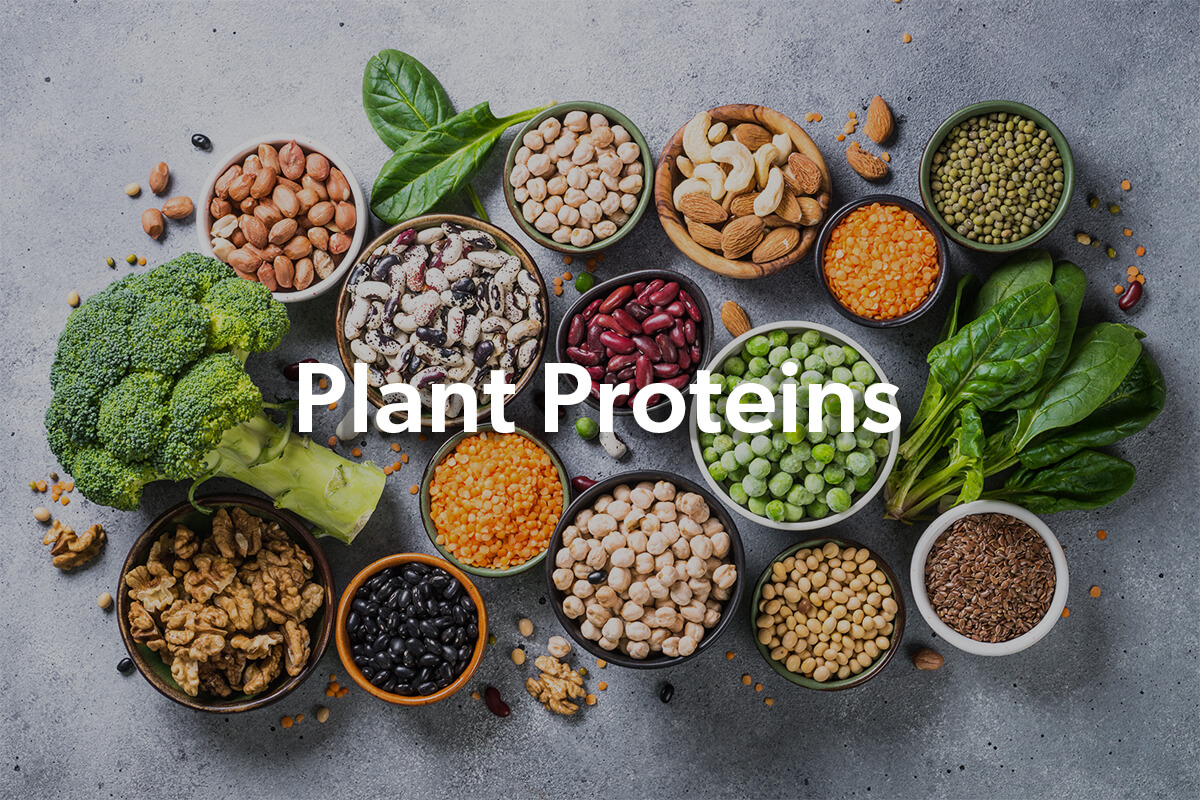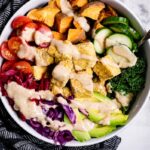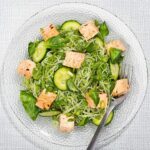Embark on a culinary journey exploring the vibrant world of flexitarian eating! Imagine meals bursting with color and flavor, where plant-based delights dance alongside carefully chosen protein sources. This guide unveils the secrets to crafting delicious and nutritious flexitarian dishes, seamlessly blending the best of both plant and animal-based ingredients. Discover the art of pairing plants and proteins for optimal nutritional benefits, unlocking a world of culinary creativity and mindful eating.
We’ll delve into the principles of flexitarian diets, providing practical tips for a smooth transition. Learn to master the art of flavor enhancement in plant-based cuisine, transforming simple ingredients into extraordinary meals. From breakfast bowls brimming with energy to satisfying dinners that nourish body and soul, we’ll equip you with the knowledge and recipes to confidently navigate the flexitarian lifestyle.
Pairing Plants and Proteins Effectively
Mastering the art of combining plant and protein sources unlocks a world of delicious and nutritious flexitarian meals. Strategic pairings not only enhance the flavor profiles of your dishes but also optimize the nutritional benefits, ensuring you receive a complete spectrum of essential amino acids and micronutrients. This section will explore effective plant-protein combinations, highlighting their nutritional complementarity and culinary versatility.
Nutritional Complementarity of Plant-Protein Combinations
Plants and proteins, when thoughtfully combined, create a synergistic effect, boosting their individual nutritional value. Many plant-based proteins are incomplete, meaning they lack certain essential amino acids. However, by pairing different plant proteins, you can create a complete protein profile, mirroring the amino acid composition found in animal-based proteins. For instance, combining legumes (like lentils or beans) which are rich in lysine, with grains (like rice or quinoa) which are rich in methionine, provides a complete protein source. This is because legumes are generally low in methionine while grains are typically low in lysine. This principle of combining complementary proteins is crucial for maximizing the nutritional value of your flexitarian diet.
Comparison of Plant-Based Protein Sources
Various plant-based protein sources offer unique nutritional profiles and culinary applications. Legumes, such as lentils, chickpeas, and black beans, are excellent sources of fiber, iron, and folate. Their earthy flavors lend themselves well to stews, salads, and dips. Tofu, a soy-based protein, is a versatile ingredient, easily absorbing the flavors of marinades and sauces. It’s a good source of iron and calcium and can be used in stir-fries, curries, or even as a meat substitute in burgers. Nuts and seeds, including almonds, chia seeds, and pumpkin seeds, are packed with healthy fats, protein, and various vitamins and minerals. They add a satisfying crunch to salads, yogurt parfaits, and baked goods. The versatility of these protein sources allows for creative culinary exploration within a flexitarian framework.
Ideal Plant-Protein Pairings for Different Meals
The following table illustrates effective plant-protein pairings for breakfast, lunch, and dinner, highlighting the nutritional benefits and offering recipe ideas. These are just examples; countless variations are possible depending on personal preferences and dietary needs.
| Plant Source | Protein Source | Nutritional Benefits | Example Recipe Ideas |
|---|---|---|---|
| Quinoa | Black Beans | Complete protein, high fiber, iron, folate | Quinoa black bean bowls with avocado and salsa |
| Oatmeal | Almonds & Chia Seeds | Fiber, healthy fats, omega-3s, protein | Overnight oats with almonds, chia seeds, and berries |
| Brown Rice | Lentils | Complete protein, high fiber, iron, magnesium | Lentil and brown rice veggie burgers |
| Spinach | Tofu | Complete protein, iron, calcium, vitamins A & K | Tofu and spinach stir-fry with brown rice |
| Sweet Potato | Pumpkin Seeds | Fiber, Vitamin A, zinc, magnesium, healthy fats | Roasted sweet potato and pumpkin seed salad |
Creating Flavorful Flexitarian Meals

Elevating the taste of flexitarian meals hinges on understanding how to coax the best flavors from both plant and protein sources. This involves careful selection of ingredients, skillful preparation techniques, and a confident hand with herbs, spices, and sauces. By mastering these elements, even the simplest flexitarian dish can transform into a culinary masterpiece.
Flavor Enhancement Techniques for Plant-Based Dishes
The inherent flavors of vegetables, legumes, and grains can be significantly amplified through various cooking methods. Roasting vegetables like broccoli, carrots, and Brussels sprouts at high temperatures brings out their natural sweetness and creates a delightful caramelization. Imagine the vibrant, almost smoky char on the broccoli florets, contrasting beautifully with the tender, slightly sweet roasted carrots. Similarly, sautéing mushrooms in olive oil with garlic and thyme releases their earthy aromas and creates a rich, savory depth. The delicate mushrooms, glistening with oil and infused with the aromatic herbs, become a symphony of textures and tastes. Consider also the transformative power of fermentation; sauerkraut, kimchi, and miso paste add complex, umami-rich notes to dishes, adding depth and complexity. The tangy, slightly sour notes of kimchi, for example, can cut through the richness of a lentil stew, providing a refreshing contrast.
Cooking Methods for Optimal Texture and Taste
The texture of plant-based proteins can be significantly improved with the right cooking techniques. For example, lentils cooked properly will be tender and creamy, while overcooked lentils become mushy. The secret lies in simmering them gently in plenty of liquid until they are just tender enough to easily mash with a fork, retaining their shape and texture. Similarly, tofu, often criticized for its blandness, can become incredibly flavorful when pressed to remove excess water, then pan-fried or baked until golden brown and crispy on the outside, while remaining soft and delicate inside. Picture a perfectly seared tofu steak, with a satisfying crunch giving way to a melt-in-your-mouth interior. This method transforms tofu from a blank canvas into a textural delight. The same careful attention to cooking time and temperature applies to grains like quinoa and brown rice; cooked properly, they offer a satisfying chewiness that enhances the overall meal.
Herbs, Spices, and Sauces for Plant-Protein Combinations
A well-stocked spice rack is a flexitarian cook’s best friend. The right herbs and spices can completely change the character of a dish.
- Lentil and Vegetable Curry: Turmeric, cumin, coriander, garam masala, ginger, and chili powder create a vibrant and aromatic curry. The warm, earthy spices complement the hearty lentils and tender vegetables, creating a dish that is both comforting and exciting.
- Tofu Stir-fry: Soy sauce, sesame oil, ginger, garlic, and red pepper flakes offer a savory and slightly spicy kick. The combination of umami-rich soy sauce, fragrant sesame oil, and the pungent bite of ginger and garlic create a harmonious balance of flavors that elevate the simple tofu stir-fry.
- Black Bean Burgers: Cumin, chili powder, smoked paprika, and chipotle peppers in adobo sauce add smoky depth and a subtle heat. The smoky paprika and chipotle peppers introduce a depth of flavor that complements the earthy black beans, resulting in a flavorful and satisfying burger.
- Roasted Sweet Potato and Chickpea Bowl: Rosemary, thyme, and a lemon-tahini dressing create a bright and herbaceous contrast to the sweetness of the sweet potato and the earthiness of the chickpeas. The vibrant herbs and tangy dressing create a refreshing contrast to the naturally sweet flavors of the sweet potato and the hearty chickpeas, providing a balanced and satisfying meal.
Recipe Development and Step-by-Step Instructions
Creating delicious and nutritious flexitarian meals involves careful planning and execution. This section provides a detailed recipe, highlighting the step-by-step process and offering variations to cater to different dietary needs and preferences. The emphasis is on building a foundational recipe that can be easily adapted.
Mediterranean Quinoa Bowl with Roasted Vegetables and Chickpeas
This recipe provides a vibrant and flavorful flexitarian meal, packed with plant-based protein and essential nutrients. The vibrant colors of the roasted vegetables contrast beautifully with the earthy tones of the quinoa and chickpeas, creating a visually appealing dish.
- Preparation: Begin by preheating your oven to 400°F (200°C). Imagine the oven’s warmth already starting to gently caress the vegetables, preparing them for their transformation.
- Vegetable Roasting: Chop one red bell pepper into bite-sized pieces, envisioning the bright red chunks glistening under the oven’s heat. Similarly, chop one zucchini and one yellow squash into equally sized pieces, their green and yellow hues promising a visual feast. Toss these vegetables with two tablespoons of olive oil, a sprinkle of dried oregano, salt, and pepper. Picture the oil coating each piece, creating a glistening sheen that will intensify their natural flavors during roasting. Spread the vegetables evenly on a baking sheet. The oven’s heat will gently coax out their natural sweetness and create a slight caramelization, enhancing their texture and taste.
- Chickpea Roasting: In a separate bowl, toss one can (15 ounces) of chickpeas, drained and rinsed, with one tablespoon of olive oil, paprika, and a pinch of cumin. Imagine the chickpeas, initially pale, absorbing the vibrant spices, turning a warm reddish-brown as they roast. Add these to the baking sheet with the vegetables. The oven’s warmth will crisp the chickpeas’ exteriors while keeping their interiors tender.
- Quinoa Cooking: While the vegetables and chickpeas roast (approximately 20-25 minutes), cook one cup of quinoa according to package directions. The fluffy grains, once cooked, will absorb the flavors of the other ingredients perfectly. Picture the quinoa transforming from dry grains into a light and airy cloud.
- Assembly: Once the vegetables and chickpeas are roasted to a tender-crisp perfection, remove them from the oven. Their surfaces will have developed a slightly browned, caramelized appearance. Combine the cooked quinoa, roasted vegetables, and chickpeas in a large bowl. The vibrant colors of the vegetables and the earthy tones of the quinoa and chickpeas create a visually stunning mix.
- Finishing Touches: Add a handful of crumbled feta cheese (optional, omit for vegan), a squeeze of lemon juice, and fresh chopped parsley. The feta, if included, adds a salty tang, while the lemon juice provides a refreshing brightness. The parsley adds a final touch of freshness and color. The final product is a symphony of textures and flavors, a balanced and complete meal.
Recipe Adaptations
This recipe can be easily adapted to include different plant and protein sources. For example, swapping chickpeas for lentils or black beans adds different textures and flavors. Substituting sweet potatoes or broccoli for some of the vegetables offers variety.
- Vegetarian Adaptation: Maintain the recipe as is, ensuring the feta cheese is included for a richer vegetarian experience.
- Vegan Adaptation: Omit the feta cheese. Consider adding toasted sunflower seeds or pumpkin seeds for added texture and healthy fats.
- Gluten-Free Adaptation: This recipe is naturally gluten-free, as it doesn’t contain any gluten-containing ingredients.
Mastering the art of mixing and matching plant and protein in flexitarian meals opens a door to a world of culinary possibilities. By understanding nutritional complementarity and employing creative flavor techniques, you can craft delicious and satisfying meals that support a healthy and balanced lifestyle. Remember, the flexitarian approach is a journey of exploration and discovery, allowing you to personalize your diet to fit your preferences and needs. Embrace the flexibility, enjoy the variety, and savor the delicious results!
Common Queries
What are the potential drawbacks of a flexitarian diet?
Potential drawbacks can include nutrient deficiencies if not carefully planned, difficulty finding suitable options when eating out, and social challenges when dining with others who don’t follow a similar diet.
How can I ensure I’m getting enough iron on a flexitarian diet?
Combine iron-rich plant foods (legumes, leafy greens) with vitamin C-rich foods (citrus fruits, peppers) to enhance iron absorption. Consider incorporating iron-fortified foods or supplements if necessary.
Are there any specific foods I should avoid on a flexitarian diet?
There are no strict “avoid” foods, but minimizing heavily processed foods, sugary drinks, and excessive amounts of unhealthy fats is recommended for overall health.
How do I manage cravings for meat while transitioning to a flexitarian diet?
Gradually reduce meat consumption, explore meat substitutes (e.g., tofu, tempeh), and focus on satisfying meals rich in flavor and texture to minimize cravings.


